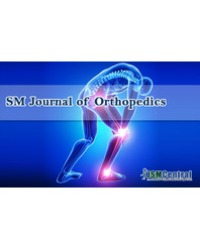
Short Term Sensory and Cutaneous Vascular Responses to Cold Water Immersion in Patients with Distal Radius Fracture (DRF)
Study Design: Repeated Measures.
Objectives: To determine the short term impact of cold water immersion on sensory and vascular functions in patients with Distal Radius Fracture (DRF) and compare responses in the injured and uninjured hands.
Background: Cold exposure is used to assess neurovascular function. Cold is also used as therapeutic agent to reduce pain and swelling. There is a scarcity of trials that have looked at the impact of cold exposure in patients with DRF.
Methods: Twenty patients with DRF, aged 18 to 65 yrs. were recruited after cast removal. All patients underwent Immersion in Cold water Evaluation (ICE) which consisted of 5 min of hand immersion in water at 12°C. Skin Blood Flow (SBF) in hands, Skin Temperature (S Temp.) in index and little fingers and sensory Perception Thresholds (sPT) at 2000Hz (for Aβ fiber) and 5 Hz (for C fiber) were obtained from ring finger, before ICE, immediately after (0 min, 1 min) and 10 min later. Differences were analyzed using repeated measures.
Results: In the DRF hand, SBF increased immediately (Mean Difference = -42.2 A.U), at 1 min (-35 A.U) and 10 min after ICE (-1 A.U). Skin Temp. In index and little fingers decreased immediately after ICE (9.9°C and 9.1° C) and did not return to baseline by 10 min (4°C and 4.1°C). ICE had no effect on sPT at 5 Hz (p>0.05). There was no difference between the DRF and uninjured hand on all measures(p>0.05) except for the sPT at 2000Hz, which remained high on the DRF side for up to 10 min (-1.8 m. A).
Conclusion: Normal cold responses consistent with ‘hunting reaction’ were observed after ICE in both hands. Aβ fibers on DRF side became less sensitive after ICE. These findings suggest that a brief immersion in cold water does not produce any adverse events associated with cold exposure.
Shaik SS¹*, Macdermid JC²,³,⁴, Birmingham T⁵, and Grewal R⁶




































